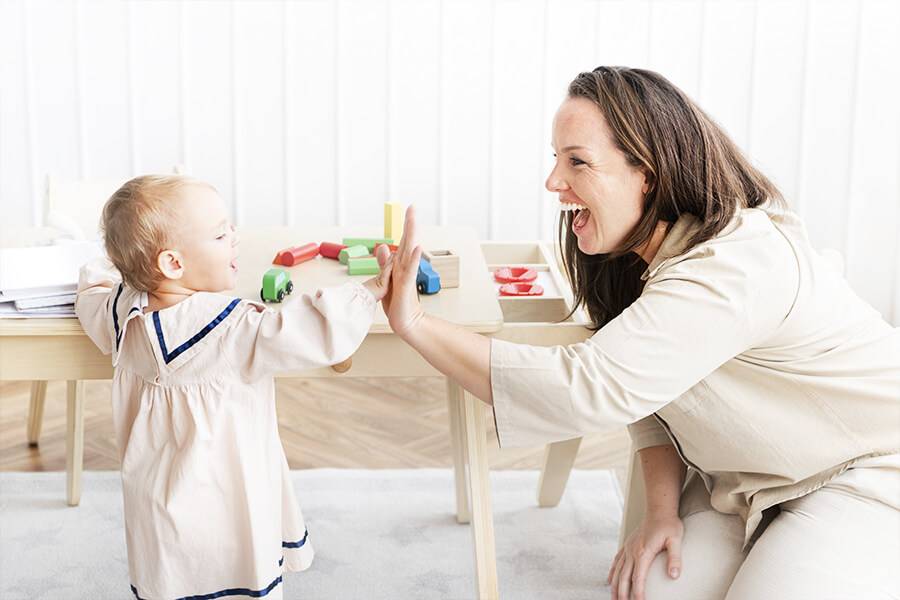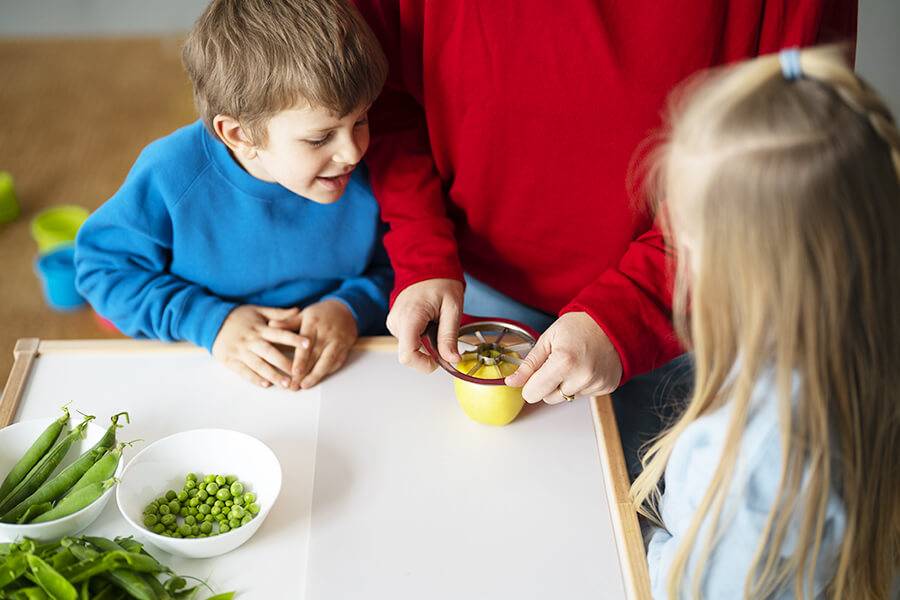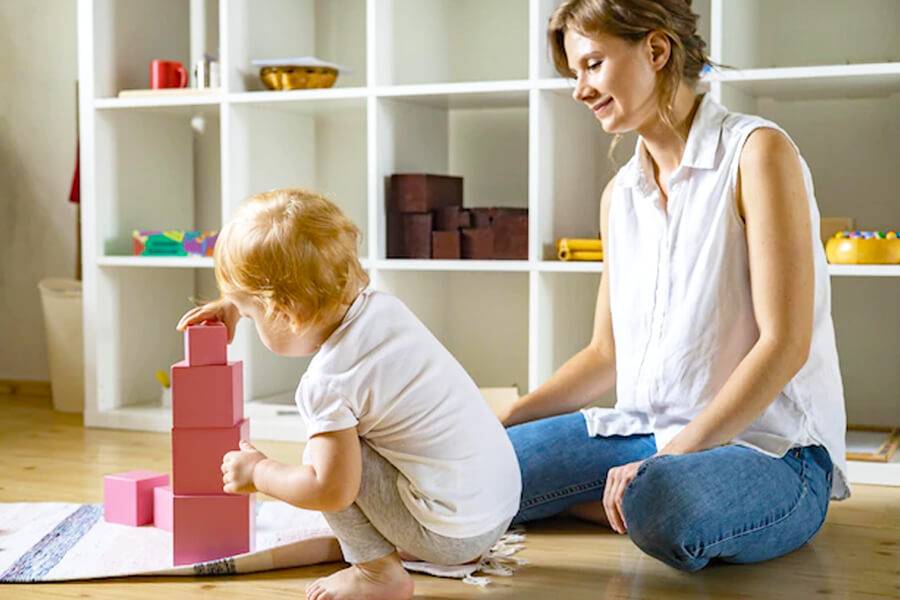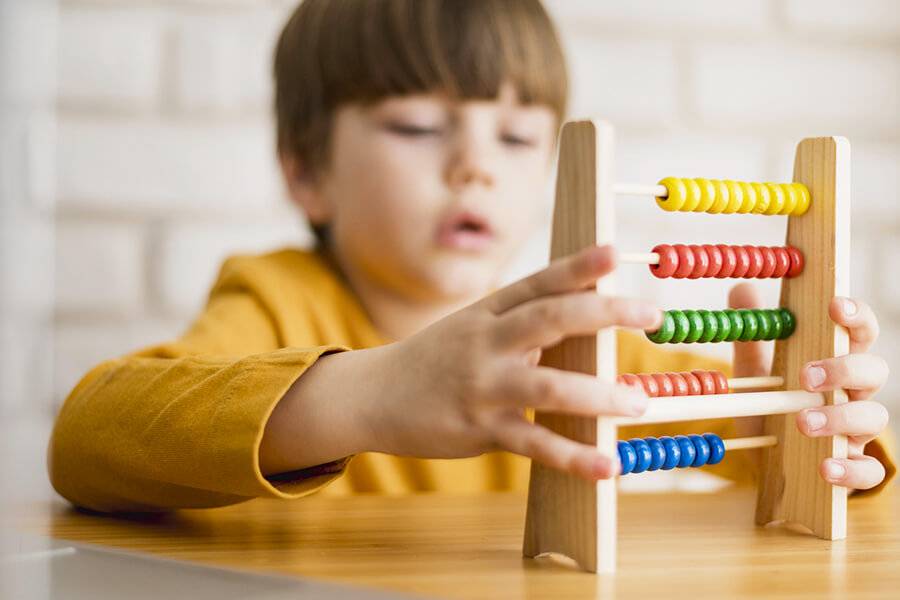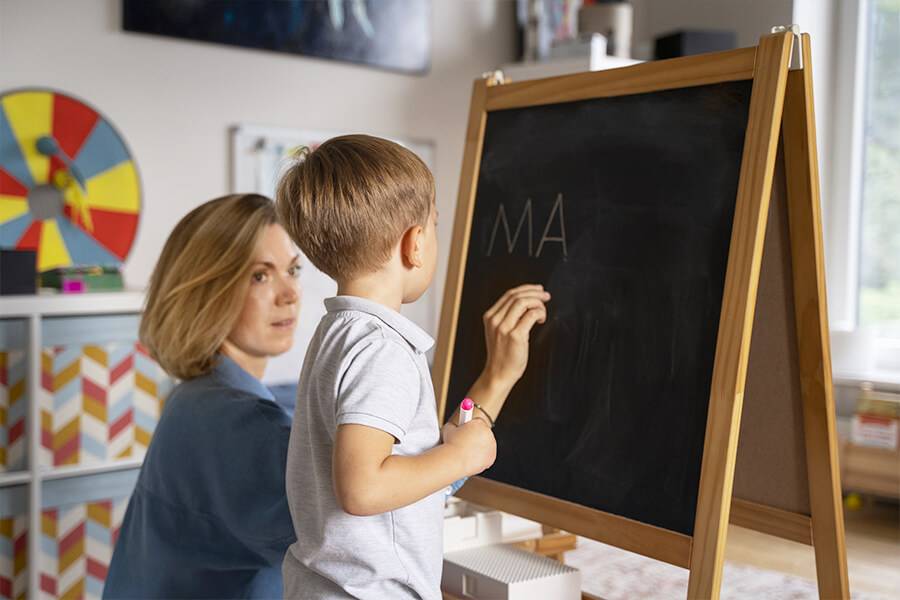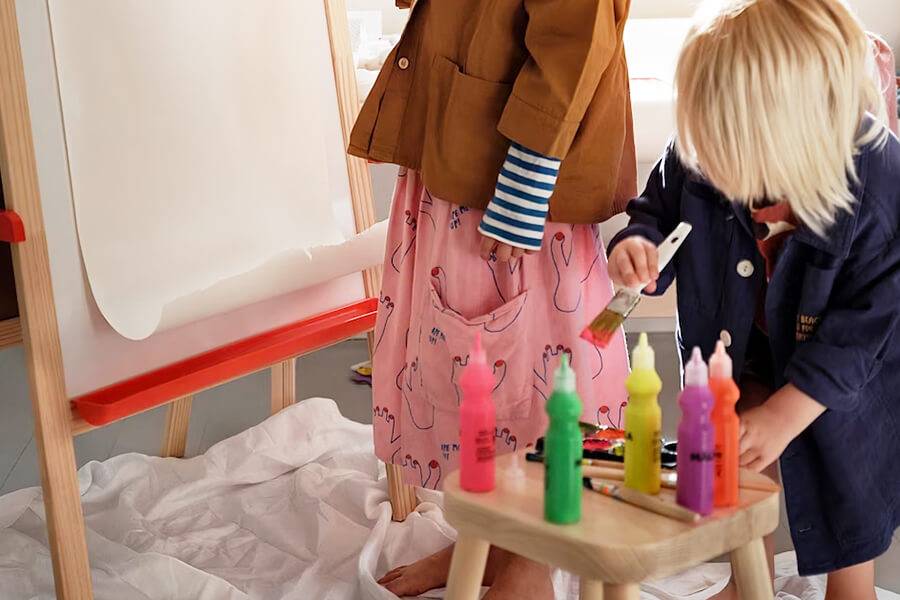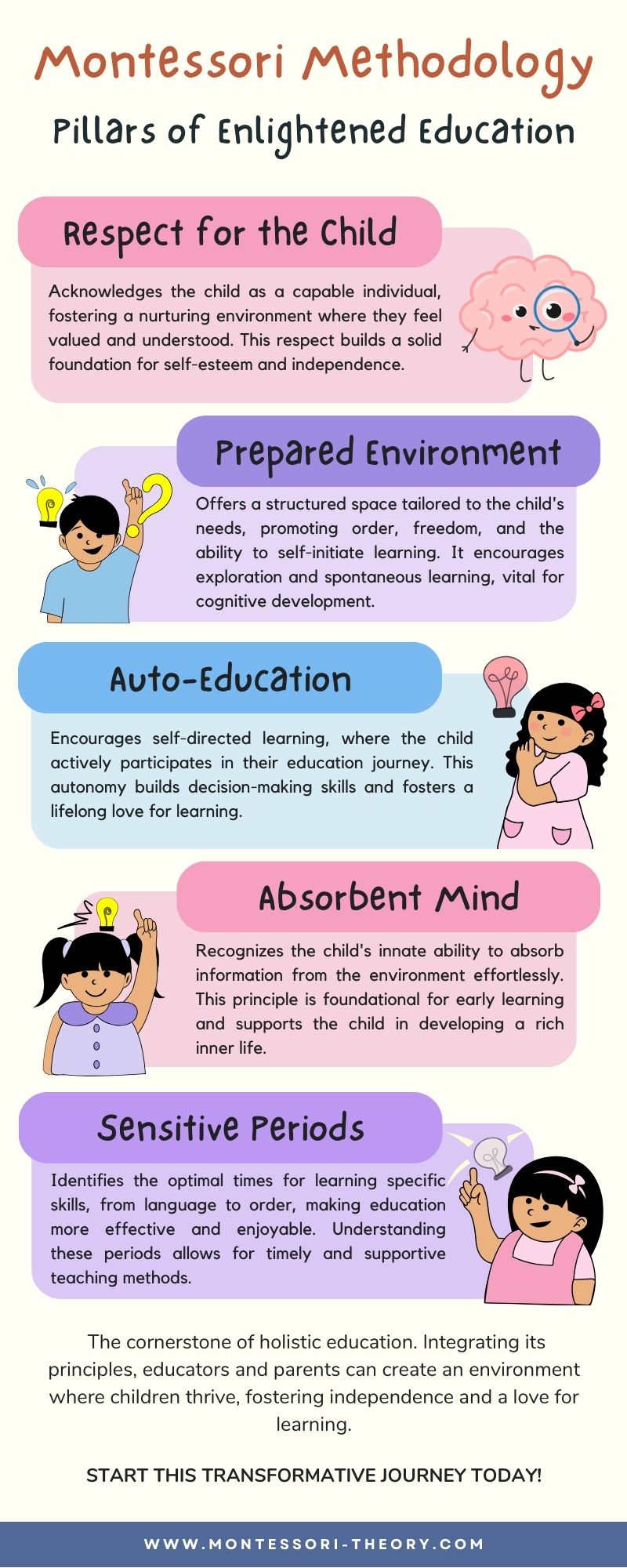Montessori education helps children focus on five essential areas of study. These areas include practical life, sensory perception, mathematics, language and culture. These areas are brought together through a set of Montessori learning materials designed to increase in complexity as the child grows and progresses. Each classroom is child-sized and provides a prepared, nurturing and stimulating environment.
The Montessori curriculum
Developed by Maria Montessori, the Montessori curriculum brings together the main educational goals and curriculum content used in Montessori schools to support children’s development. It is an international program shared by Montessori schools around the world. Montessori education is introduced by an overview of the educational concepts, which guide the practice in Montessori schools.
The benefits of the Montessori curriculum
One of the factors that makes the Montessori method work so well is the emphasis on self-motivation. The five areas of the program encourage children to learn at their own pace.
By following a Montessori program, your child will acquire:
- Independence
- A love of learning through hands-on, individualized activities
- The ability to develop one’s own talents
- Self-discipline
- Better social interaction
Characteristics of Montessori education
Children, rather than teachers, lead the Montessori learning program in the classroom, a characteristic that distinguishes Montessori schools from others.
Rather than being confined to the same thing and learning it in the same way, children who study in the Montessori method will be allowed to move at their own pace and move from one skill to another if they are ready (regardless of age). The Montessori teachers’ role is to observe, to help when necessary, but they will not interfere with the child’s learning process.
The 5 key areas of the Montessori curriculum
Each of the five areas of learning in the Montessori program is prepared with learning tools and materials that become increasingly complex as the children progress.
The Montessori curriculum is divided into five key areas:
- Practical life
- Sensorial
- Mathematics
- Language
- Cultural studies
Practical life activities focus on developing fine motor skills and independence through tasks such as pouring, cutting, and sewing. Sensorial activities help children develop their sense of touch, taste, smell, and sound through activities such as matching and sorting. Mathematics activities focus on developing an understanding of numbers, quantities, and operations. Language activities aim to develop children’s reading and writing skills through a variety of activities such as storytelling and phonics. Cultural studies introduce children to different cultures and their customs, geography, and history through activities such as map work and cultural festivals
-
Montessori Practical Life Materials
The Montessori practical life materials include exercises and activities that children observe in daily life. These activities develop children’s independence, concentration and fine motor skills. These exercises include activities such as pouring, sorting, sewing, peeling, serving, cleaning, and many other activities using real-life objects in a child-sized environment.
Montessori Practical Life exercises are designed to prepare your child for daily life by teaching him to interact with his environment. This area of learning is the foundation for all other Montessori learning.
-
Montessori Sensorial Materials
Montessori sensorial exercises are designed to develop your child’s ability to understand and adapt to their environment. This area of learning involves the manipulation of specially designed materials that isolate the senses. Exposure to sensory information, such as size, color, shape, texture, smell, and taste, helps your child classify and categorize the things around them as they explore the world.
Sensory activities teach children to hone their senses of sight, touch, hearing, smell and taste. Sensory work also prepares children for math, language and geometry by teaching them to classify and sort.
Examples of sensory materials and activities include:
- Pink Tower
- Box of colors
- Geometric solids
- Trinomial cube
- Knobbed cylinders
These materials and activities allow children to explore and discover the world around them in a hands-on way, helping them to develop important cognitive and motor skills that will serve as a foundation for their future learning.
-
Montessori Math Materials
The Montessori math materials teach children to understand complex mathematical concepts and functions through hands-on learning experiences. Each exercise in the mathematics domain builds on another and the child gradually moves from the concrete to the abstract.
Children learn to count, identify and associate numbers with their quantity, relate decimal quantities to symbols. They learn to understand the principles of addition, subtraction, multiplication and division using Montessori materials. Math activities are not implemented at a set pace, allowing your child to progress at their own pace.
Some examples of materials and activities include:
- Cards and counters
- Staircase of pearls
- Seguin’s table
- Plateau of quantities
Montessori maths materials provide a comprehensive and hands-on approach to learning mathematical concepts, allowing children to gradually move from concrete to abstract understanding while progressing at their own pace.
-
Montessori Language Materials
Montessori language exercises are designed to improve your child’s listening skills, comprehension and vocabulary. The Montessori language program provides children with the knowledge and skills necessary to develop their vocabulary and language comprehension. Language arts in a Montessori classroom is based on phonetic awareness. Language is an essential part of the curriculum. The skills required for reading, writing and oral language are developed through hands-on experience using Montessori language materials.
Children learn sounds (phonics), letter identification and formation, how to combine sounds to form words, how to construct simple sentences, and how to hold a pencil correctly. Oral language skills are developed through daily social interactions, group experiences. This area of learning is designed to help your child understand different modes of communication.
Children work with specific, hands-on, tactile language materials, such as:
- Sandpaper letters
- Movable alphabets
- Nomenclature cards
These materials are designed to help children develop their language skills in a fun and interactive way. Montessori language exercises are designed to improve your child’s listening skills, comprehension and vocabulary. The skills required for reading, writing and speaking are developed through hands-on experience using the Montessori language materials.
-
Montessori Cultural Studies
Cultural studies in the Montessori curriculum refers to the study of history, geography, and the natural sciences. This includes learning about different cultures and societies, as well as the physical world and its components. Activities and materials in this area of the curriculum often include maps, globes, and cultural artifacts, as well as lessons on historical events, famous figures, and scientific concepts. The goal of cultural studies is to help children develop an understanding and appreciation of the world around them and the diversity of human experience.
This field allows children to explore and learn about the world around them. It is the study of cultures (or the humanities), but this field actually encompasses many disciplines, including biology, history and art.
The cultural program includes a wide range of subjects:
- Geography (continents, landforms, the solar system…)
- Zoology (classification and physiology of animals…)
- Biology (classification and physiology of plants…)
- History (the chronology, the use of a calendar…)
- Sciences
This part of the program is probably one of the most important, as it helps students understand their own identity. Children work with specific cultural materials:
- Map of seas and oceans
- Box of continents
- Life cycle activities

